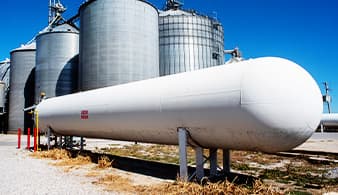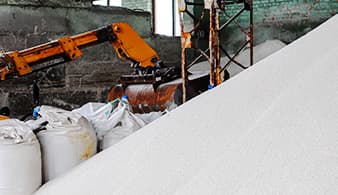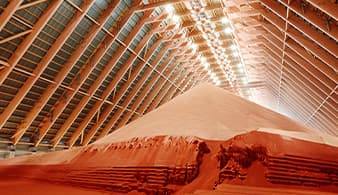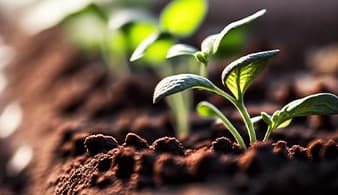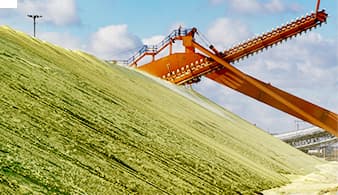Overview
The fertilizer industry has seen dramatic changes in market dynamics, with challenges posed by policy and regulatory changes, political instability, conflicts and new macroeconomic realities. The drive towards energy transition and ambitious zero-carbon goals has also opened up the industry to new entrants and new opportunities.
It is more vital than ever for market participants to have the full picture – to capitalise on the opportunities and manage the risk of the challenges.
Argus’ fertilizer market intelligence will empower you to work smarter:
- Our price reporting services provide robust daily and weekly price assessments, market moving news, actionable market commentary and proprietary data
- Our short-term outlook and medium to long-term analytics services connect you with industry-leading forecasts and analysis of prices, supply, demand, costs, trade and projects
- Our consulting services partner with you to deliver fully bespoke consulting solutions, including market-specific research and analysis
Our market coverage
Argus is the leading independent provider of market intelligence to the global fertilizer market.
Latest fertilizer news
Browse the latest market moving news on the global fertilizer industry.
Romgaz still open to buy ferts producer Azmoures
Romgaz still open to buy ferts producer Azmoures
London, 14 January (Argus) — Romanian state-owned natural gas company Romgaz remains interested in acquiring fertilizer producer Azomures, but will consider investing in other Romanian fertilizer projects. Romgaz has made an offer for the company and remains "open to an honest and coherent dialogue" concerning an acquisition, the company said today. Azomures said earlier this week that it was mothballing production after negotiations with Romgaz stalled. Azomures has not produced fertilizer since August 2024 , barring small-scale production in the second half of last year . The company, currently owned by Switzerland-based trading firm Ameropa, can produce up to 1.6mn t/yr of NPK and nitrogen fertilizers, and consumes around 1bn m³/yr of gas when operating at full capacity. Around three-quarters of its production is sold on the Romanian domestic market. Romgaz first expressed interest in Azomures in February and an acquisition was presented as the best solution for Romanian farmers. By Aidan Hall Send comments and request more information at feedback@argusmedia.com Copyright © 2026. Argus Media group . All rights reserved.
Pupuk Indonesia issues tender to buy Feb-Nov amsul
Pupuk Indonesia issues tender to buy Feb-Nov amsul
Singapore, 14 January (Argus) — State-owned Pupuk Indonesia has issued a tender today to buy a total of 40,000t of bulk standard caprolactam-grade amsul for delivery over February-November 2026 to its subsidiary Pupuk Kalimantan Timur (PKT). PKT has requested four single shipments of 10,000t each to Bontang port. The first shipment should be loaded by the third week of February, followed by one shipment each in June, September and November. Pupuk Indonesia has requested that offers be submitted on a formula price with a variable discount. By Dinise Chng Send comments and request more information at feedback@argusmedia.com Copyright © 2026. Argus Media group . All rights reserved.
Urea vessel in Venezuela updates destination signal
Urea vessel in Venezuela updates destination signal
Amsterdam, 13 January (Argus) — The Hongli 8 appears close to leaving Jose port in Venezuela, loaded with around 30,000t of urea, which would mark the first shipment of urea since the US raid and capture of the country's president on 3 January, according to vessel tracking data providers. The vessel has updated its destination for Panama, set to arrive on 17 January, according to vessel tracking data from Kpler and others. But there was no confirmation from the parties linked to the vessel. The cargo is understood to be loaded and ultimately destined for the Mexican west coast. The US raid and capture of Nicolas Maduro rocked Venezuela at the start of the month and prompted a spike in already elevated freight rates from the country's ports, complicating urea flows . Producers slashed urea prices in a bid to maintain sales liquidity. But the situation has since calmed and the US has altered its stance regarding restrictions on Venezuela's crude sales, prompting speculation that a similar approach may be extended to other commodities. Venezuelan urea typically heads to Brazil, as well as some other nearby markets and Mexico. Venezuela is home to three major urea facilities, with a combined operating capacity of up to 2.2mn t/yr of granular and prilled urea. But exports have varied widely in recent years, with Argus ' consulting arm estimating Venezuelan urea exports at just over 400,000t in 2025, down from over 700,000t in 2020-21. By Harry Minihan Send comments and request more information at feedback@argusmedia.com Copyright © 2026. Argus Media group . All rights reserved.
Romania’s Azomures mothballs ferts production
Romania’s Azomures mothballs ferts production
London, 12 January (Argus) — Romanian fertilizer producer Azomures has today mothballed its production facilities after efforts by state-owned natural gas company Romgaz to acquire the firm stalled. Azomures will temporarily terminate the employment of 600 workers and suspend all major plant maintenance. But production facilities remain ready to restart when conditions are deemed "economically feasible". Azomures has not produced fertilizer since August 2024 , barring small-scale production in the second half of last year . The company, currently owned by Switzerland-based trading firm Ameropa, can produce up to 1.6mn t/yr of NPK and nitrogen fertilizers, and consumes around 1bn m³/yr of gas when operating at full capacity. Around three-quarters of its production is sold on the Romanian domestic market. Romgaz first expressed interest in Azomures in February and an acquisition was presented as the best solution for Romanian farmers. But negotiations between the two parties stalled this week after Romgaz failed to submit an offer and acquisition timeline. By Aidan Hall Send comments and request more information at feedback@argusmedia.com Copyright © 2026. Argus Media group . All rights reserved.
Spotlight content
Browse the latest thought leadership produced by our global team of experts.
Explore our fertilizer products
Key price assessments
Argus prices are recognised by the market as trusted and reliable indicators of the real market value. Explore some of our most widely used and relevant price assessments.



